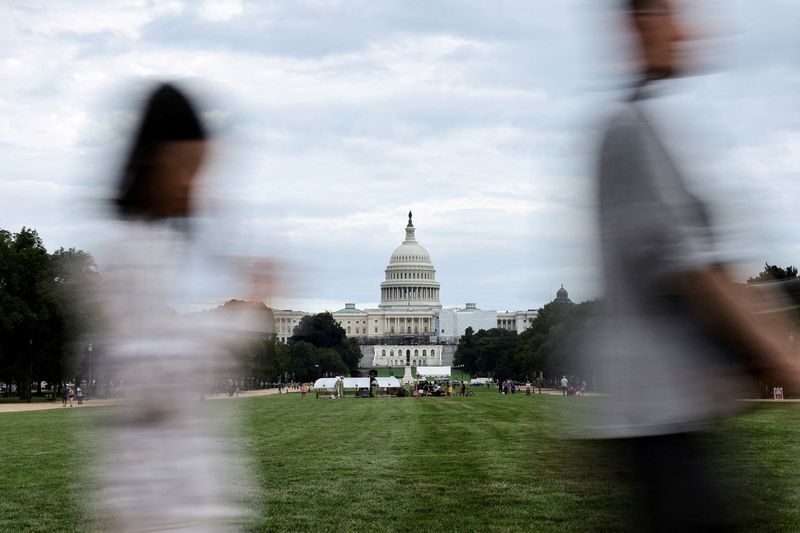By Mark Miller
(Reuters) – An important Biden administration effort to control the soaring cost of prescription drugs made headlines this week – but drug costs are just one part of a growing struggle faced by U.S. seniors in meeting their healthcare costs.
Medicare officials this week unveiled the first list of drugs that will be subject to price negotiations with pharmaceutical companies under the Inflation Reduction Act (IRA) signed into law last year. The law empowers Medicare to negotiate with drugmakers on some of the most expensive drugs on the market, and the initial list targets medications used to treat diabetes, cancer and heart disease. Any changes in costs resulting from the negotiations will not surface until 2026, but seniors who face high drug costs will see more concrete impacts of the IRA sooner than that.
In 2024, Medicare’s current requirement that enrollees pay a 5% coinsurance above the Part D “catastrophic threshold” will be eliminated. And in 2025, a $2,000 annual cap on out-of-pocket costs for drugs under Medicare Part D takes effect. (A provision that caps patient costs for insulin at $35 per month became effective this year.)
But drug costs are just one aspect of the healthcare cost problems confronting seniors. Inadequate protection from out-of-pocket costs across the Medicare program also poses a threat. In particular, Medicare’s complicated coverage options make the system difficult to navigate, especially for low-income seniors who are eligible for both Medicare and Medicaid and may receive extra assistance from special government programs.
STRUGGLING TO PAY BILLS
The broader cost problems are highlighted in a recent government report that finds millions of older adults struggling with unpaid medical bills. The unpaid medical tab among adults aged 65 and older rose by 20% between 2019 and 2020, according to the federal Consumer Financial Protection Bureau (CFPB), to $53.8 billion. Nearly 4 million seniors had unpaid medical bills in 2020, even though 98% had health insurance coverage.
The report highlights problems with coordination among payers and inaccurate bills. Low-income seniors covered by both Medicare and Medicaid (so-called dual eligibles) should face little or no out-of-pocket cost for healthcare, but they are more likely than the general Medicare population to report billing problems, according to the CFPB report.
“The issues of networks and billing are the primary source of unpaid medical bills,” said Hector Ortiz, senior policy analyst at CFPB and a co-author of the report.
Another source of confusion stems from the federal Qualified Medicare Beneficiary (QMB) program, which pays Medicare Part A and B premiums and cost-sharing for low-income seniors. Seniors who qualify for this program are enrolled at the state level, and healthcare providers are prohibited from billing them under federal law. But it happens anyway, said Sarah Murdoch, director of client services at the Medicare Rights Center, an advocacy and consumer assistance organization.
“We often find healthcare providers who have no idea what this program is or that they shouldn’t be billing beneficiaries – and they end up with the bills.”
Eligibility varies by state, and a number of states have expanded access in recent years. A single federal program, Extra Help, provides assistance with Part D drug costs.
The problems extend beyond low-income seniors, Murdoch adds. One frequent problem is large hospital bills. Medicare Part A has a hefty deductible ($1,600 this year); that will be partially or fully covered for seniors who own Medigap supplemental policies. But some seniors in traditional fee-for-service Medicare do not purchase Medigap or have other supplemental coverage. And out-of-pocket protections in Medicare Advantage plans vary.
Seniors who need skilled nursing facility care following a hospitalization sometimes face substantial cost-sharing. After 20 days, they can be charged up to $200 per day, and they pay 100% of costs after 100 days. In Medicare Advantage, skilled nursing coverage varies by plan. “It can get expensive really quickly, even for people who have coverage,” Murdoch said.
Expensive dental services are another hot spot, she noted. Dual-eligible seniors receive help with dental, vision or hearing services, and many Medicare Advantage plans offer some level of coverage. President Joe Biden proposed creation of a standard benefit in the Build Back Better legislation that failed to pass Congress in 2021. Costly procedures such as implants and crowns can cost thousands of dollars; out-of-pocket spending on dental services among Medicare beneficiaries was $874 in 2018, according to KFF, a nonprofit organization focused on health policy.
Murdoch counsels seniors to be aware of their right to appeal. Enrollees in fee-for-service Medicare can appeal direct to Medicare; in Medicare Advantage, the appeal process begins with your specific insurer. She also recommends that enrollees review their monthly statements that explain what healthcare services have been covered. Also keep an eye out for any Advance Beneficiary Notice of Non-Coverage that your healthcare provider might issue to you – these are required if a provider expects a payment denial that leaves you with a financial liability.
The Medicare Rights Center offers a page with detailed information on all Medicare assistance programs.
The opinions expressed here are those of the author, a columnist for Reuters.
(Writing by Mark Miller; Editing by Matthew Lewis)
